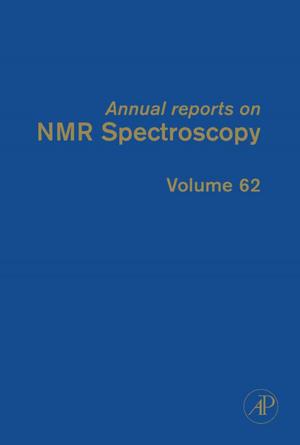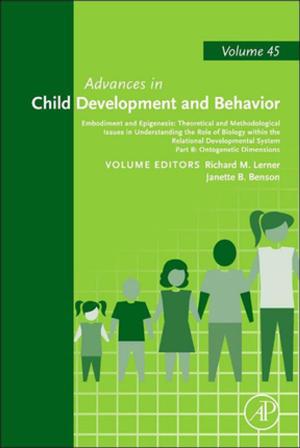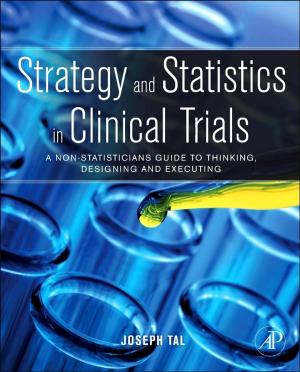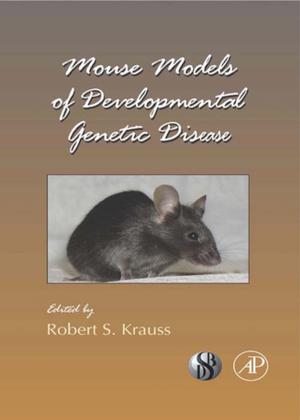The Biology and Identification of the Coccidia (Apicomplexa) of Rabbits of the World
Nonfiction, Health & Well Being, Medical, Ailments & Diseases, Infectious Diseases, Parasitology, Science & Nature, Science| Author: | Donald W. Duszynski, Lee Couch | ISBN: | 9780123979100 |
| Publisher: | Elsevier Science | Publication: | May 14, 2013 |
| Imprint: | Elsevier | Language: | English |
| Author: | Donald W. Duszynski, Lee Couch |
| ISBN: | 9780123979100 |
| Publisher: | Elsevier Science |
| Publication: | May 14, 2013 |
| Imprint: | Elsevier |
| Language: | English |
The Biology and Identification of the Coccidia (Apicomplexa) of Rabbits of the World is a taxonomic summation of a damaging intestinal parasite found in rabbits and transmissible to other species, including humans. This book conceptually and historically summarizes the world's literature on the parasite and also provides a quick guide to isolation procedures, identification, strategies for management, and available chemotherapy. It is a vital source of knowledge about coccidia’s real and potential transmission to humans, which can lead to dangerous health problems, like severe dehydration, vomiting, lethargy and even death.
Coccidiosis is an intestinal disease that affects several different animal species, including canines and humans, and is one of the most prevalent protozoal infections in North America. The causative agent is a protozoan that has the ability to multiply rapidly and cause major damage in the intestinal wall, rupturing the cells of the intestinal lining. The final stage, the oocyst, is extremely resistant to environmental stress and is difficult to completely remove from the environment. Oocysts are frequent contaminants of feed and water and when the sporulated oocysts are ingested by other animals, they start the life cycle over in the new host. With the demand for rabbits in scientific research and for rabbit meat for human consumption increasingly globally each year, rabbits are of epidemiologic significance for laboratory workers, university researchers, veterinarians, pet owners, and breeders.
- Evaluates the scientific and scholarly merit of each of the publications written about coccidian from every rabbit species, providing a complete historical rendition
- A treatise for the identification of coccidia and their treatment as needed
- Written in a style that can be understood by most educated lay persons and laboratory workers
- Written by the first ranked author team among the world-class parasitologists who study coccidia
- Combined in one single source, this book follows the gold standards in coccidian biology and identification
- Brings all that information together in one volume and solves the problems faced by researchers, veterinarians, students and others in trying to find and navigate through this scattered literature
The Biology and Identification of the Coccidia (Apicomplexa) of Rabbits of the World is a taxonomic summation of a damaging intestinal parasite found in rabbits and transmissible to other species, including humans. This book conceptually and historically summarizes the world's literature on the parasite and also provides a quick guide to isolation procedures, identification, strategies for management, and available chemotherapy. It is a vital source of knowledge about coccidia’s real and potential transmission to humans, which can lead to dangerous health problems, like severe dehydration, vomiting, lethargy and even death.
Coccidiosis is an intestinal disease that affects several different animal species, including canines and humans, and is one of the most prevalent protozoal infections in North America. The causative agent is a protozoan that has the ability to multiply rapidly and cause major damage in the intestinal wall, rupturing the cells of the intestinal lining. The final stage, the oocyst, is extremely resistant to environmental stress and is difficult to completely remove from the environment. Oocysts are frequent contaminants of feed and water and when the sporulated oocysts are ingested by other animals, they start the life cycle over in the new host. With the demand for rabbits in scientific research and for rabbit meat for human consumption increasingly globally each year, rabbits are of epidemiologic significance for laboratory workers, university researchers, veterinarians, pet owners, and breeders.
- Evaluates the scientific and scholarly merit of each of the publications written about coccidian from every rabbit species, providing a complete historical rendition
- A treatise for the identification of coccidia and their treatment as needed
- Written in a style that can be understood by most educated lay persons and laboratory workers
- Written by the first ranked author team among the world-class parasitologists who study coccidia
- Combined in one single source, this book follows the gold standards in coccidian biology and identification
- Brings all that information together in one volume and solves the problems faced by researchers, veterinarians, students and others in trying to find and navigate through this scattered literature















